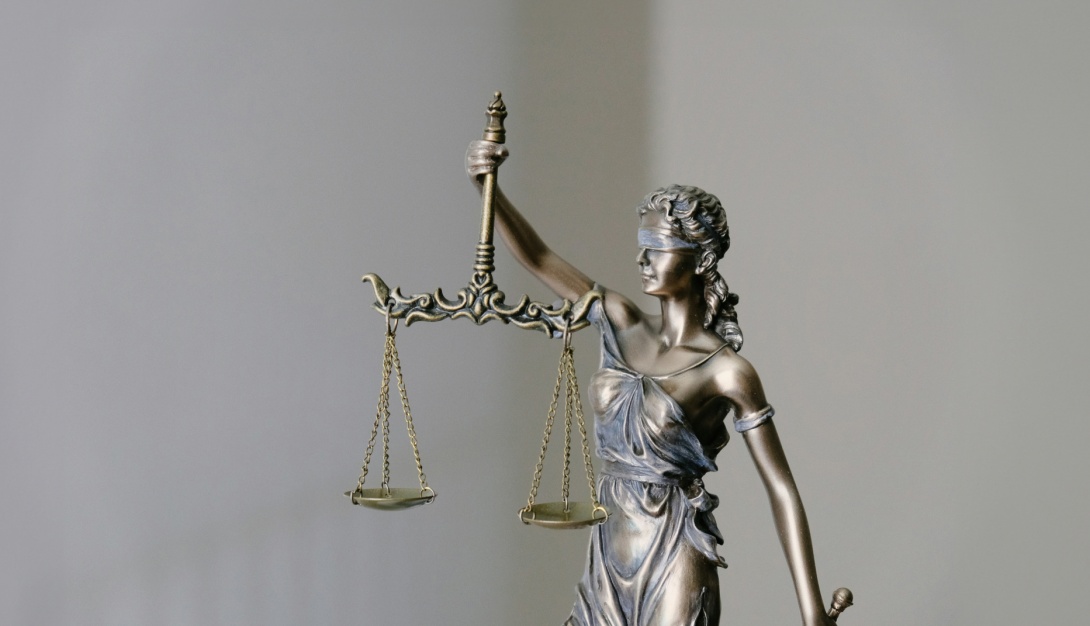The 2025 Evolving Liability Conference brought together professionals from the insurance, legal, and academic communities to explore how liability frameworks are responding to fast-evolving risks. As technological advancements, environmental concerns, and social change redefine what constitutes harm, traditional notions of fault and liability are being tested. Likewise, novel litigation often seeks to expand traditional tort doctrines, while new regulatory frameworks and collective redress mechanisms open different avenues for victims of harm to pursue legal claims.
This evolving liability landscape creates additional complexity for companies and their insurers. Conference discussions underscored the need for proactive legal and underwriting strategies, alongside better alignment between emerging risks and available coverage. As societal expectations and regulatory standards rise, it will be important to maintain resilient, forward-looking liability frameworks.
Keynote speech: Anthony Sebok
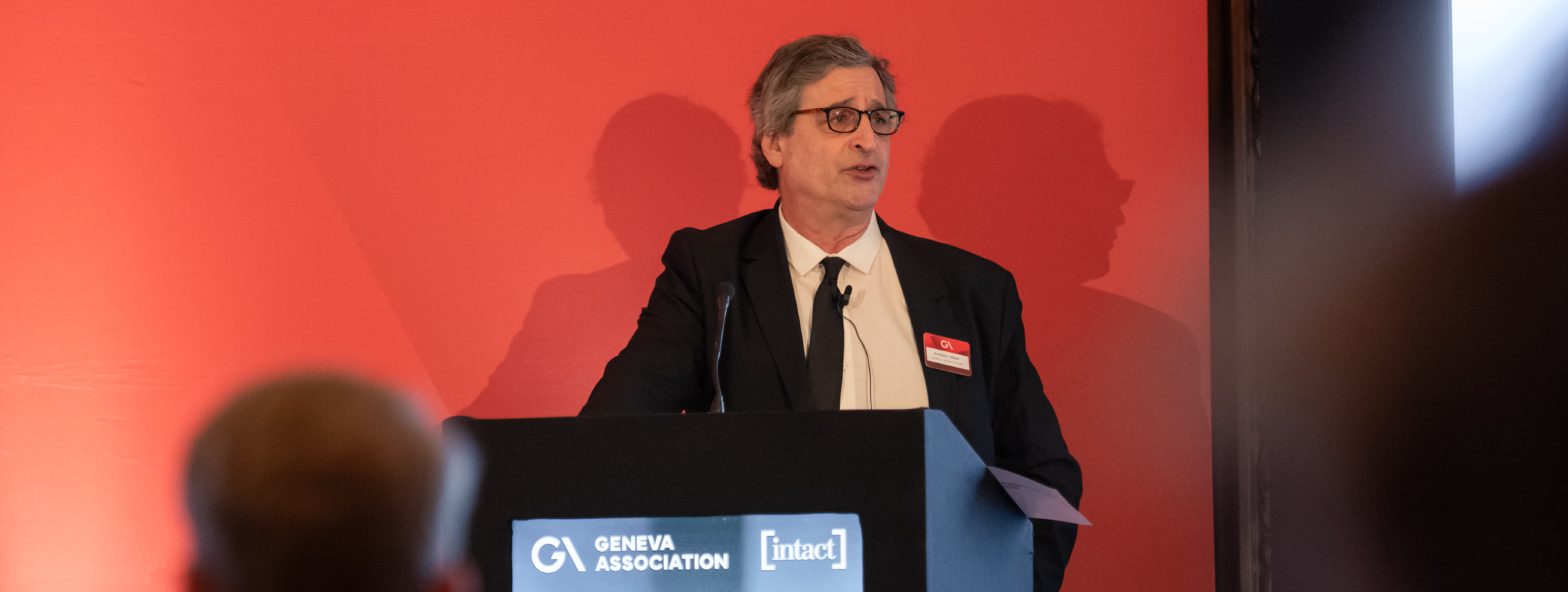
Anthony Sebok, Cardozo School of Law
Recent analysis of tort law and liability trends within the US reveals significant shifts over time. More specifically, the ‘dispute pyramid’ model highlights that only a small fraction of real-world injuries result in legal claims, and even fewer cases proceed to adjudication. A notable paradox has emerged: despite tort reforms favouring defendants, plaintiffs are increasingly winning cases and receiving higher awards. This challenges traditional explanations of social inflation, particularly the view that antagonistic juries are the primary drivers of large corporate payouts.
Comparative developments suggest a growing doctrinal convergence between U.S. and European tort systems. As substantive and procedural rules across jurisdictions begin to align, there is potential for European victims to secure similarly outsized settlements, even in systems where judges rather than juries preside. Nevertheless, this outcome is not guaranteed. Tension remains between reforms intended to shield defendants and the increasing success of plaintiffs, prompting further scrutiny of settlement patterns and litigation strategies to better understand the underlying drivers of social inflation and prospective shifts in liability dynamics.
Panel 1: New Consumer Protection Rules – How can liability re/insurers respond?
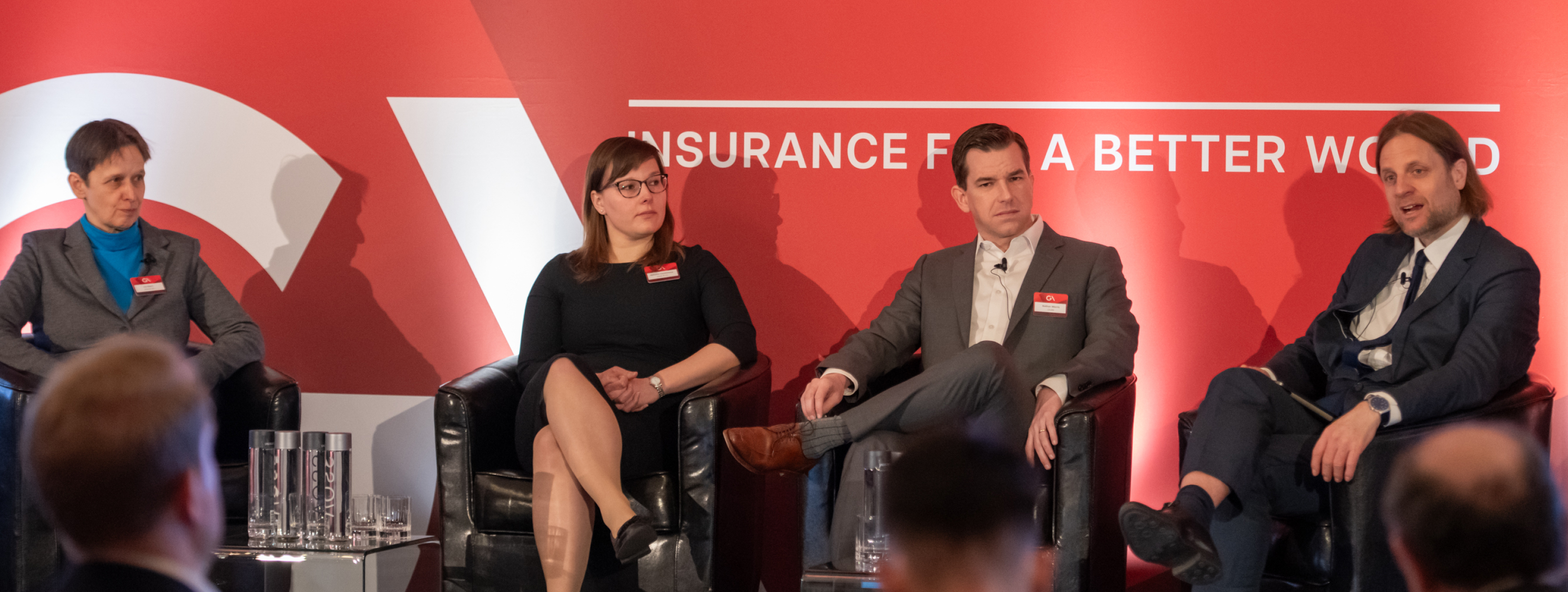
Ina Ebert, Munich Re; Natasha Lioubimova, Clyde & Co; Nathan Morris, Chubb; Duncan Fairgrieve, Université Paris Dauphine PSL
This panel delved into the evolving regulatory and litigation landscape surrounding new consumer protection rules and explored how liability re/insurers can respond effectively. The discussion focused on recent legislative shifts in both Europe and the US, especially the revised EU Product Liability Directive, the AI Act, and the emergence of collective redress mechanisms. Participants outlined the key aims of these reforms – such as enhancing sustainability, transparency, data governance, and harmonised enforcement across jurisdictions – while emphasising their implications for insurers. The regulatory changes are likely to lower the barriers for consumers to bring legal claims, expand definitions of compensable harm (including psychological distress and data loss), and increase exposure to liability for a broader range of actors within companies’ supply chains.
Challenges presented by vague legislative language and the varied implementation of EU directives across Member States may create opportunities for forum shopping by plaintiffs and inconsistencies in legal interpretation. The shifting litigation landscape in the US, where traditional torts are increasingly being recast through a consumer protection lens, raises the volume and complexity of claims.
Overall, proactive risk management, the regular review of insurance policy wordings, and a clear communications strategy that aligns with public expectations are particularly important as collective redress frameworks and third-party litigation funding continue to gain traction across jurisdictions.
Panel 2: The Advent of AI – How will it shape future commercial liability claims?
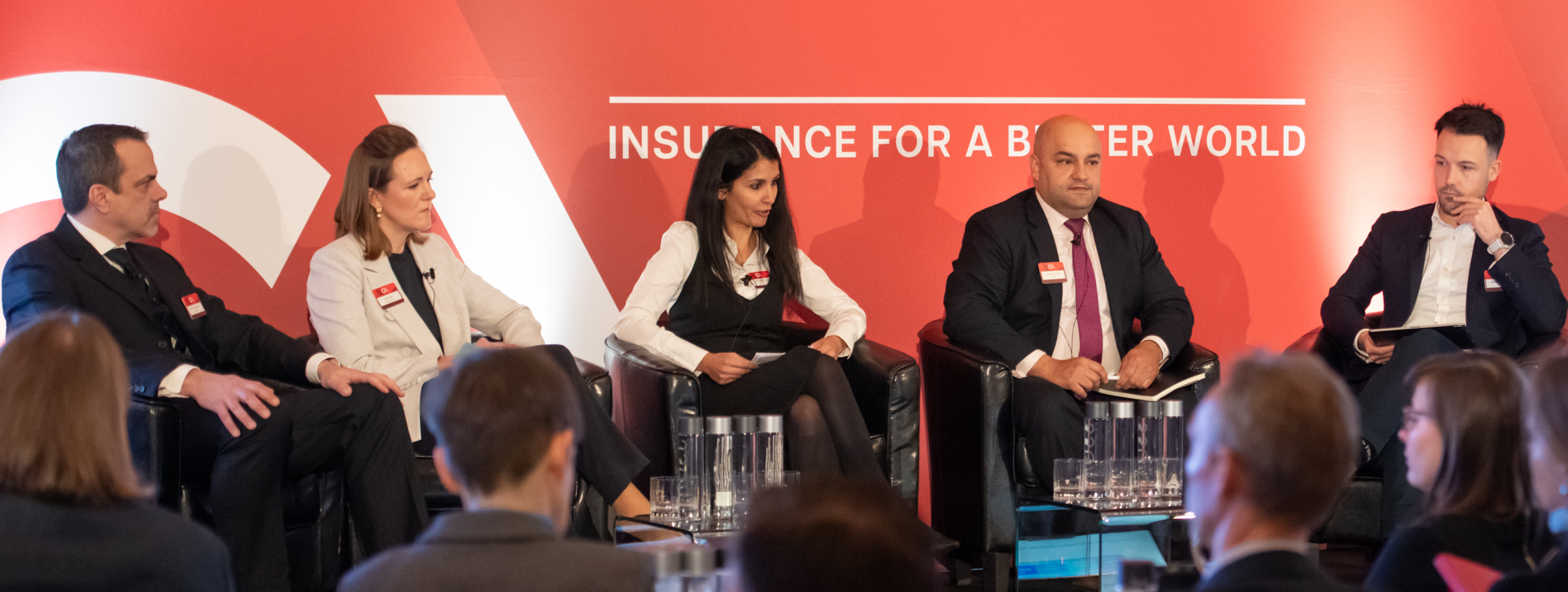
Oliver Lauxmann, Allianz; Lydia Savill, Hogan Lovells; Maryam Kashani, Swiss Re; Jesus Gonzalez, Aon; Michael Gregory, RSA
This panel examined how artificial intelligence, particularly generative AI, is reshaping the landscape of commercial liability. Experts from legal, underwriting, and risk advisory backgrounds discussed how AI’s rapid integration across industries can catalyse innovation but also heighten risks. While AI is driving efficiency and creating value, it introduces significant uncertainty around liability, regulatory compliance, and insurance coverage.
Assigning responsibility in the event of harm caused by AI systems, especially when outcomes stem from opaque, black-box decision-making, is a key challenge. Jurisdictional complexity further complicates potential liability assessment, with contrasting regulatory approaches emerging between the EU, UK, and US. The EU’s AI Act, with its product-style regulatory model, is seen as a global benchmark, whereas other jurisdictions lean toward principles-based or fragmented frameworks.
Regulatory enforcement has the potential to spark mass litigation, especially in sectors already under scrutiny such as financial services, healthcare, and legal professions. The concept of ‘silent AI’ – unintended coverage gaps in existing policies – is a concern. Insurers and reinsurers are beginning to reassess wordings, develop AI-specific endorsements, and demand clearer disclosures from policyholders regarding AI use and governance.
Ultimately, insurers must collaborate more closely with their corporate clients to understand evolving risks and co-develop solutions. Ongoing dialogue, adaptive underwriting, and strong governance are critical to navigating the liability landscape of AI.
Panel 3: Cybersecurity Governance – An increasing source of corporate liability
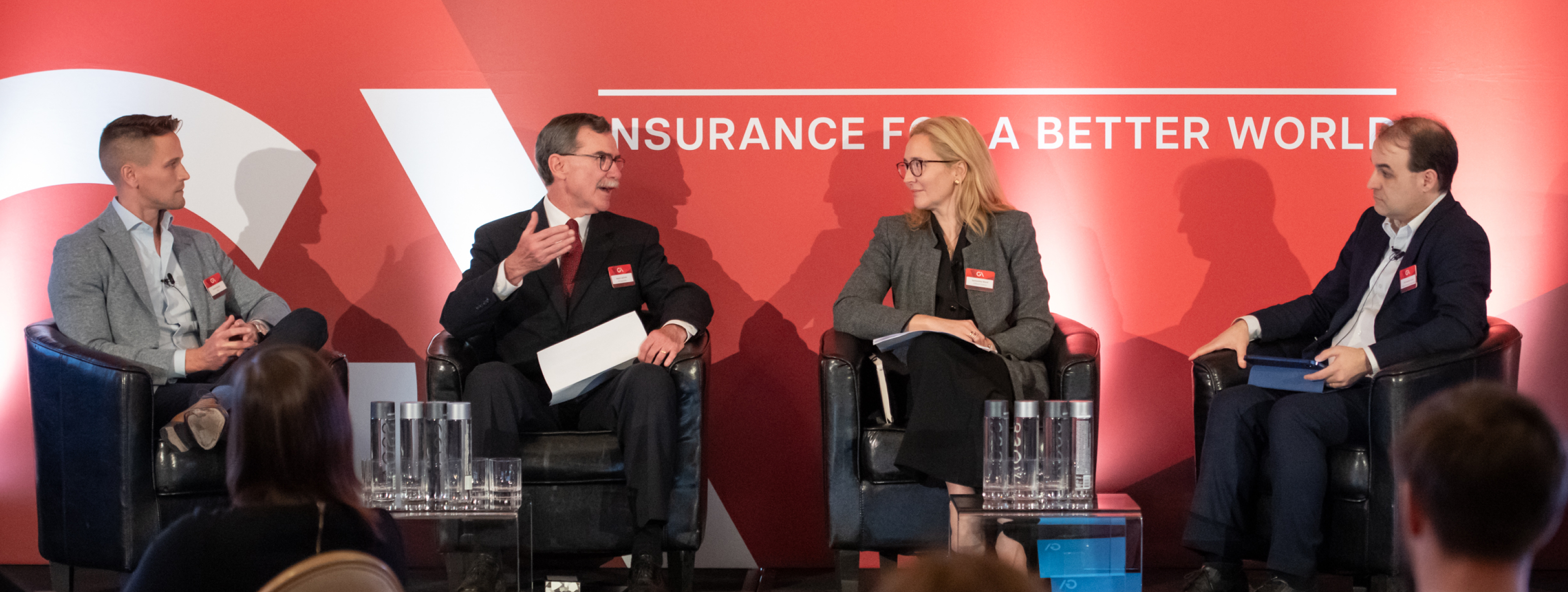
Aaron Belair, RSA; Kevin LaCroix, RT Specialty; Samantha Ward, Clifford Chance; Christopher Cates, Intact Financial Corporation
This panel explored the growing significance of cybersecurity governance as a source of corporate liability, particularly for boards and senior management. Featuring professionals from legal, insurance, and underwriting sectors, the discussion was framed around the life cycle of a cyber incident, from vendor selection through to post-incident governance.
When it comes to vendor selection, contractual clarity, security audits, and cyber insurance play a critical role in managing third-party risks. Although vendor selection is typically a management-level decision, for organisations where cybersecurity is mission-critical, boards must actively oversee and monitor such arrangements.
Short-term financial decisions can create long-term cybersecurity vulnerabilities, underscored by recent industry incidents. Maintaining board-level awareness and robust risk governance structures are important.
Pre-established and well-practised crisis management plans prove highly valuable in incident response. Timely disclosure, both to regulators and the public, is essential though fraught with challenges, especially in fast-moving cyber incidents. Transparency and cultural readiness to escalate issues internally are crucial.
Emerging threats such as AI-enabled deepfakes introduce reputational and legal risks if organisations fail to prepare for such scenarios. Proactive governance, updated insurance coverages, and evolving board competencies are essential to meeting the complexities of modern cyber risk.
Fireside chat: Emerging Liability Risks – Looking back and seeing forward
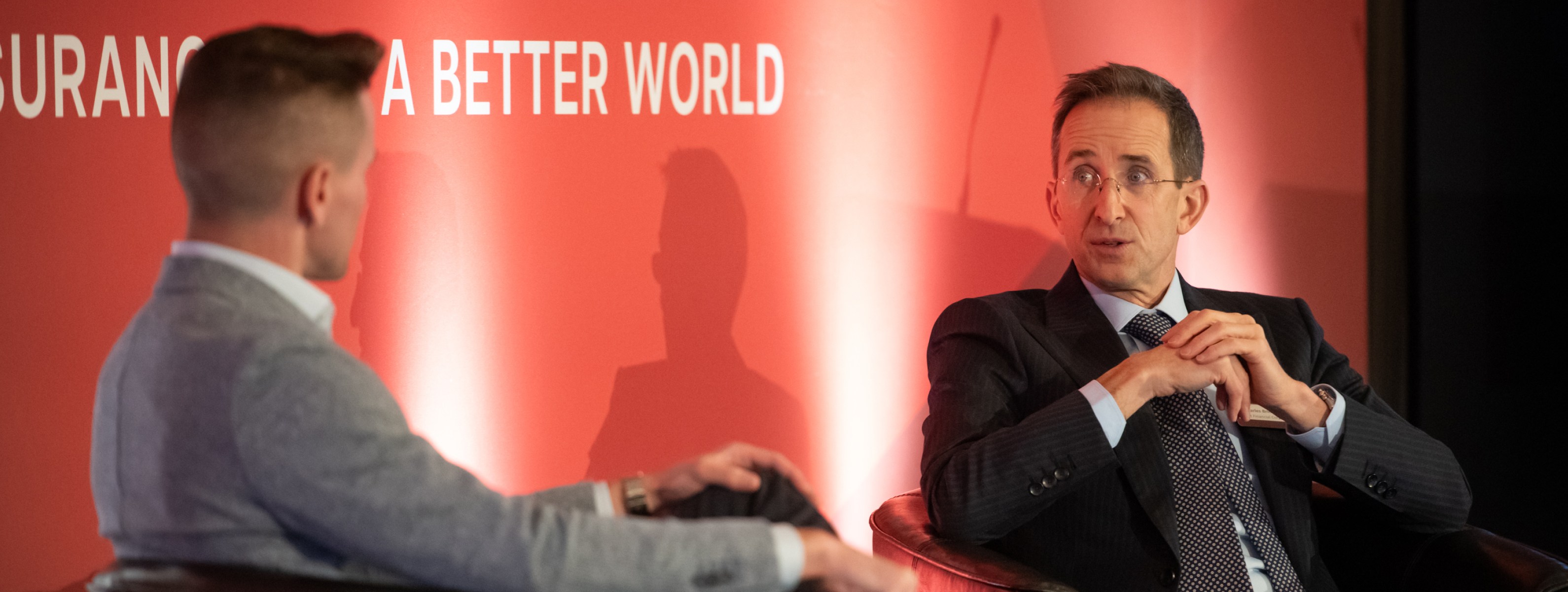
Aaron Belair, RSA; Charles Brindamour, CEO, Intact Financial Corporation
An examination of historical liability crises in the insurance industry reveals several critical factors that exacerbated past challenges: widespread latent exposures, delayed recognition of causation, ill-considered capital deployment, and ambiguities in product policy language. Today, however, the industry is better positioned to manage emerging risks through enhanced product design, clearer and more precise exclusions, and more deliberate government involvement.
Among the current liability concerns, PFAS (per- and polyfluoroalkyl substances) stands out due to its pervasive presence in society, though the causal links are less clearly established compared with historical cases like asbestos. Technology-driven liability risks, particularly those arising from cyber threats and artificial intelligence, are also gaining prominence. These risks pose unprecedented challenges for liability insurers due to their rapid evolution, complexity, and the potential for significant loss accumulation without the traditional benefit of diversification.
Looking ahead, closer collaboration between industry and government is critical, particularly in intelligence sharing, enforcement, and addressing systemic risks like cyber threats. Strengthening capabilities in trend detection, fostering innovation in liability insurance, and enhancing customer education are key strategies for navigating the future liability landscape.
